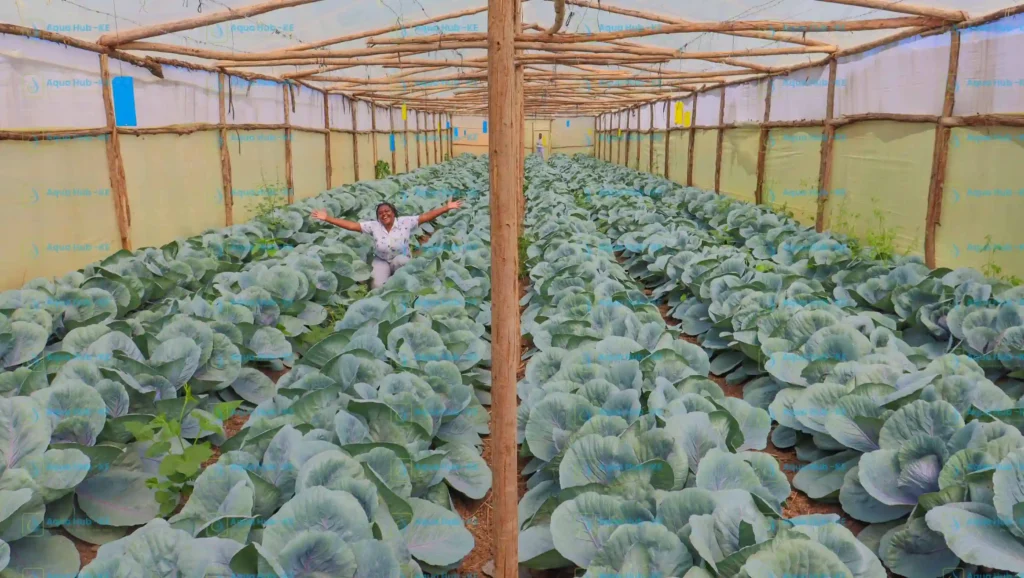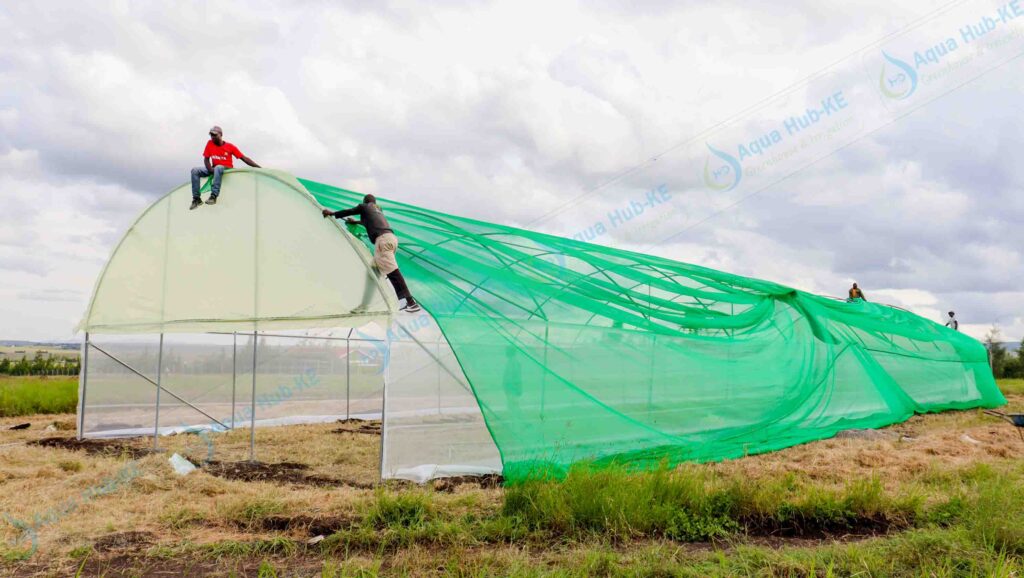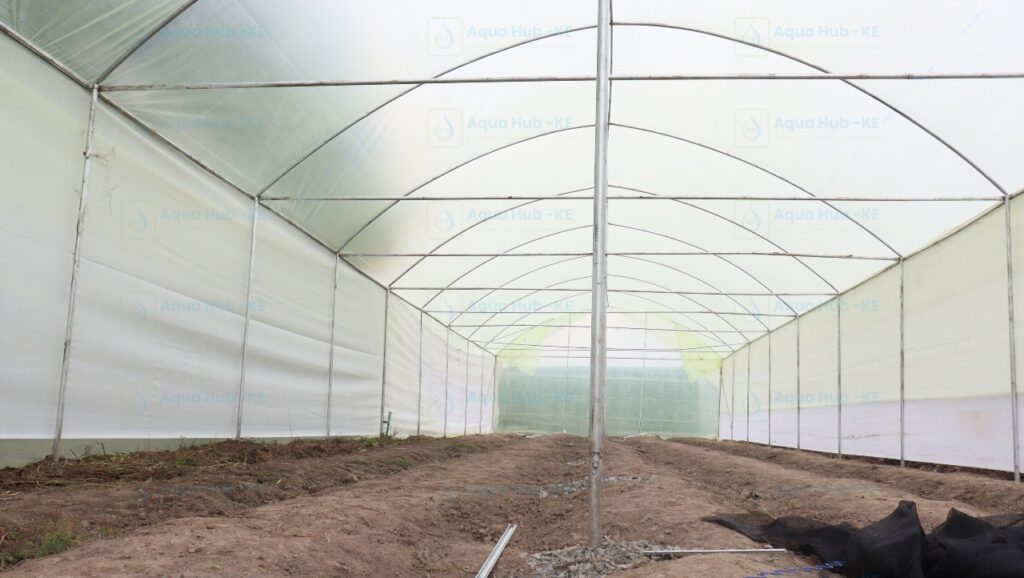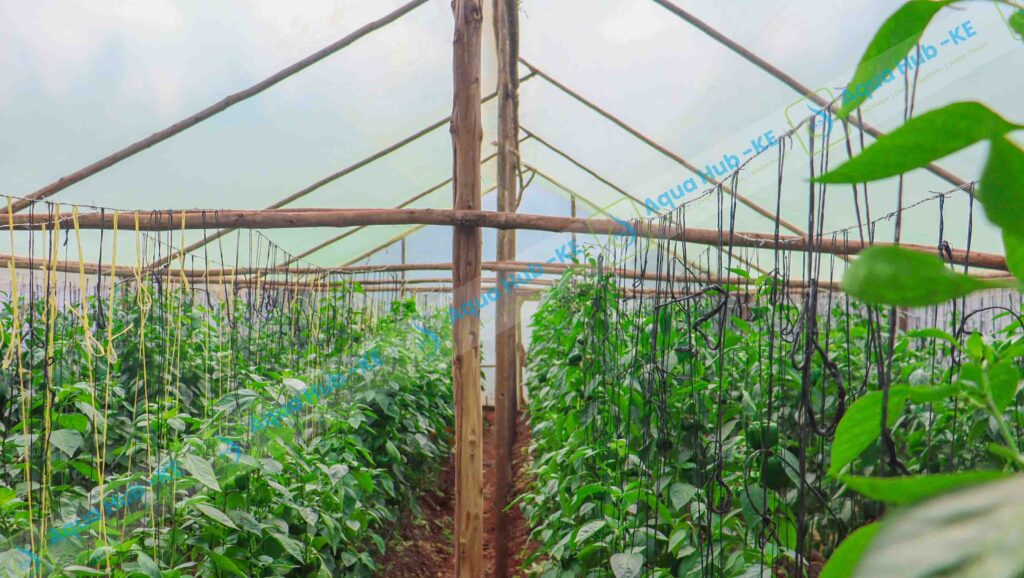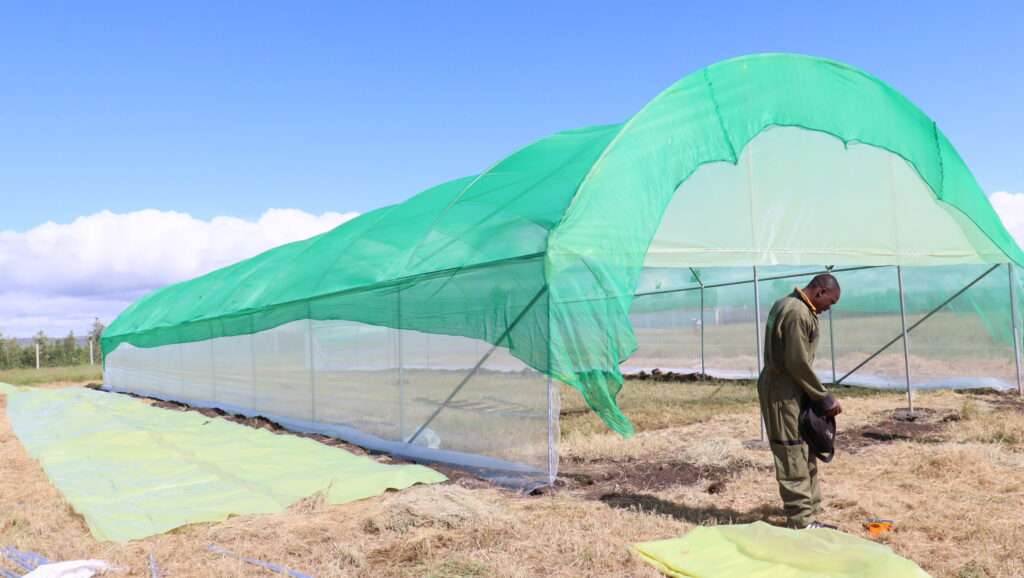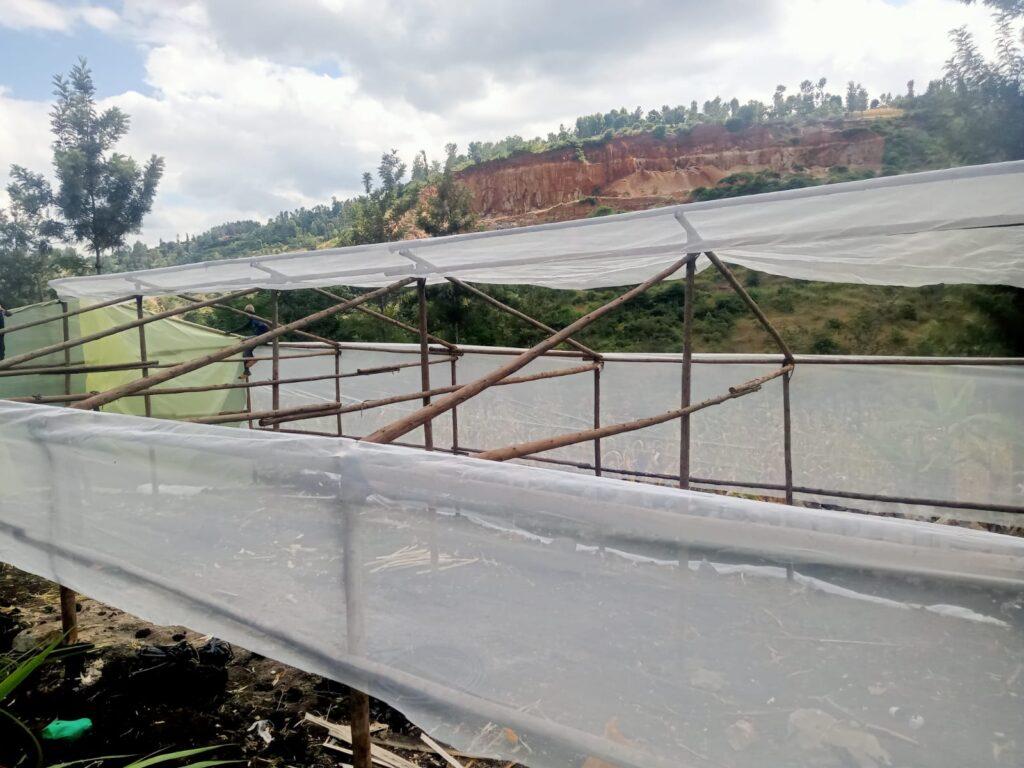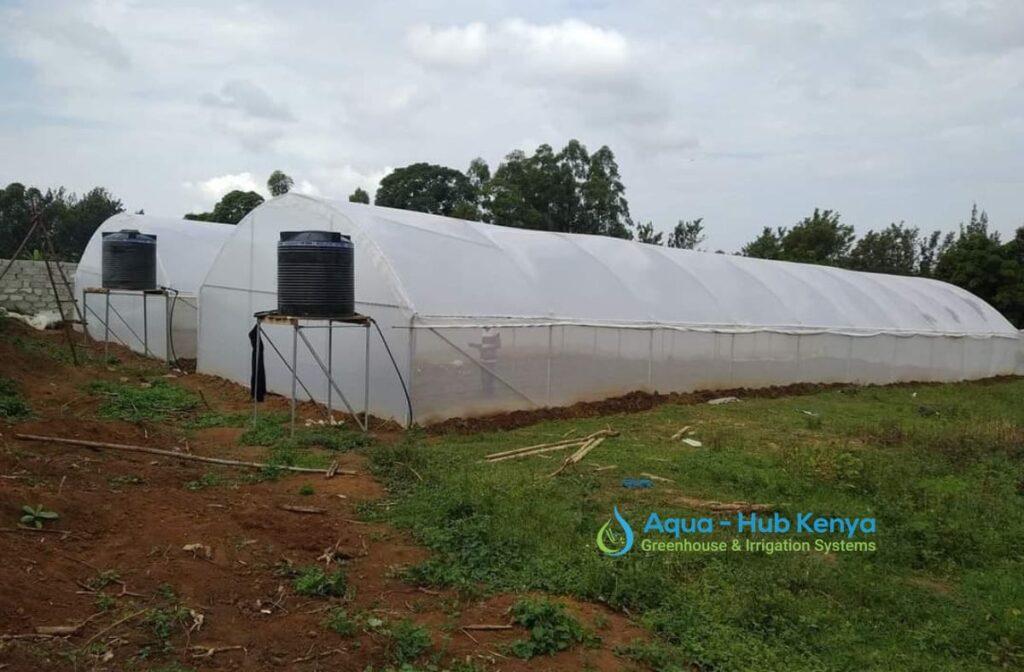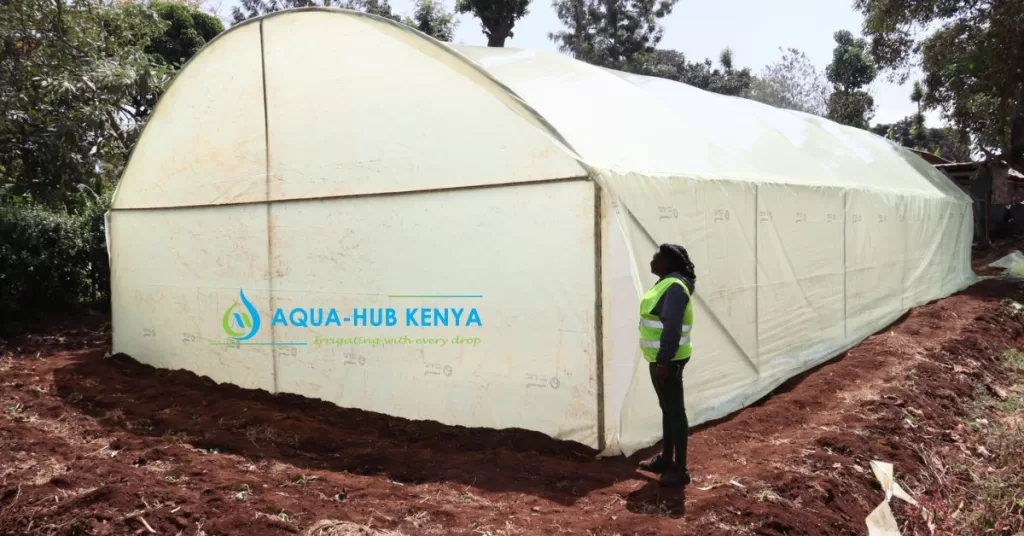Blog
8 steps on how to start Greenhouse Farming in Kenya
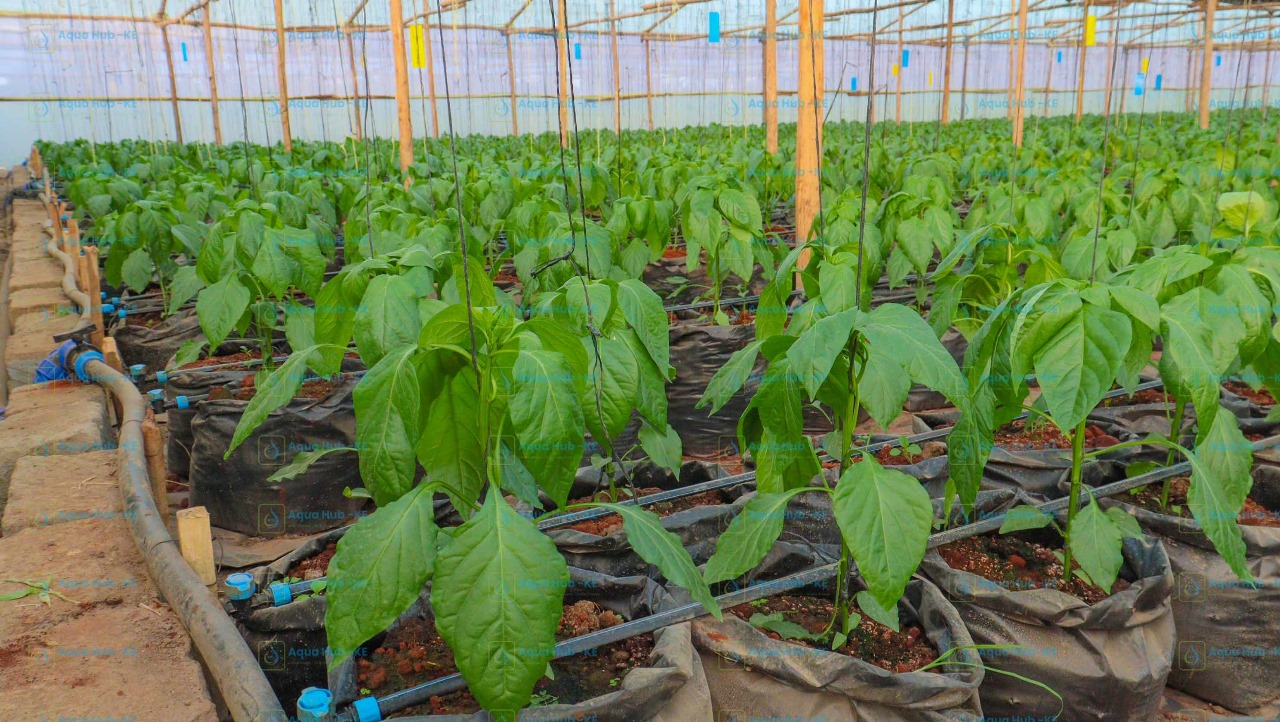
Get quality materials and installation support by Aqua Hub LTD if you want to start greenhouse farming in Kenya from Aqua Hub LTD. We ensure that greenhouse farming is accessible to all farmers by supplying them with the best materials and structure installation.
Call 0790719020
Start Greenhouse Farming with Aqua Hub LTD
What is Greenhouse Farming?
Greenhouse farming is a smarter way of cultivating crops in conditions regulated to optimum levels. Temperature and humidity are kept at optimal range by using light penetrable polythene sheet and shade nets to enhance air conditioning. Because the polythene sheet is made of insulation material, it traps sunlight heat thus the environment remains hot. The air exchange ventilation sealed with shade nets allows for temperature balance.
Crops are therefore kept safe from harsh external weather conditions, pests and diseases when grown inside a greenhouse. This practice enables farmers to grow crops throughout the year, regardless of external environmental conditions.
Why Greenhouse Farming is Important in Kenya
In Kenya, greenhouse farming has steadily gained traction due to the increasing demand for high-quality, fresh produce and the unpredictable nature of rainfall patterns. Farmers are moving toward controlled-environment agriculture to ensure consistent yields and income.
Greenhouse farming helps tackle these issues by:
- Enabling year-round production regardless of seasonal changes.
- Increasing yields through optimal growing conditions.
- Reducing pesticide use, making crops safer and more organic.
- Maximizing land use, especially in urban and peri-urban areas.
- Ensuring consistent supply for markets, supermarkets, and export.
- Improving income levels by growing high-value crops like tomatoes, capsicum, strawberries, and herbs.
With climate change impacting open field farming, greenhouse farming offers a sustainable alternative solution for production of top quality and high yields.
Types of Greenhouse in Kenya
Before we get started on the steps on how to start greenhouse farming, it’s important to understand the types of greenhouses in Kenya. They include.
Categorized by the Construction Materials
Wooden Greenhouse
- Made from treated timber and polythene.
- Cheaper but less durable than metallic greenhouses.
Metallic Greenhouse
- More durable and long-lasting.
- Higher initial investment but lower long-term maintenance.
Categorized by the Design
Tunnel (Hoop) Greenhouse
- Most common in Kenya.
- Made with metallic and UV-treated polythene covers.
Vented Greenhouse
- A structure with tunnel design but contains an extensive ventilation on the roof.
- It is also designed with metallic or wooden structure.
- Cost more than a tunnel greenhouse design.
Gothic (Gabled) Greenhouse
- Design is often designed using wooden structure.
- Has a pointed roof to allow better water drainage and wind resistance.
- Ideal for regions with heavy rainfall.
- It is cheaper to construct due to its design using wooden structure.
8 Steps to Start Greenhouse Farming in Kenya
Step 1: Conduct Market Research and Choose the Right Crop
Before you invest in a greenhouse, identify crops with good demand and high profit margins. In Kenya, top greenhouse crops include:
- Tomatoes
- Capsicum (bell pepper)
- Cucumbers
- Strawberries
- Herbs like basil, mint, and coriander
Conduct local market surveys and assess the competition, buyer demand, pricing, and seasonality. This ensures that your investment meets actual market needs.
Step 2: Select an Ideal site to Place the greenhouse
The area where you would set up your greenhouse should be scrutinized to ensure;
- It has reliable water access since you will totally use drip irrigation.
- Proper soil PH, health, and fertility. Check the soil PH and test for possible infections to ensure it is safe for propagation.
- Good sunlight access. Clear any trees or vegetation that could block the sun.
- The land is flat or level. A flat land means the structure will be stable.
- It has a good drainage. Proper drainage will promote growth and lower diseases.
Step 3: Decide the Size and Type of Greenhouse
The size depends on your budget, available land, and production goals. Common sizes include:
- 8m x 15m (small-scale)
- 8m x 24m (medium scale)
- 8m x 30m or larger (commercial)
Pick the structure that suits your environment. for example, use Gothic in wet areas and tunnel types in drier regions.
Step 4: Secure Capital and Budget Wisely
Greenhouse farming requires an initial investment. Your budget should include:
- Greenhouse structure (frame, cover)
- Drip irrigation system
- Seeds or seedlings
- Fertilizers and pesticides (organic preferred)
- Water tanks or borehole connection
- Labour and installation
A basic 8m x 15m wooden greenhouse in Kenya may cost KES 120,000 to KES 180,000, while a metallic one can go for KES 200,000 to KES 300,000. Include working capital for at least one growing season.
Step 5: Construct or Install the Greenhouse
You can build the greenhouse yourself or hire professionals. Consider the following:
Materials Required:
- UV-treated polythene cover (150–200 microns)
- Galvanized steel or treated wood for the frame
- Insect netting for ventilation points
- Drip irrigation kit
- Anchors or foundation materials
- Door and ventilation system
Tips for Successful Greenhouse Installation
- Align the structure east to west to maximize sun exposure.
- Ensure the greenhouse is airtight to maintain a stable microclimate.
- Include pathways and raised beds inside to ease crop management.
Step 6: Prepare the Soil and Install Irrigation
Soil preparation is key to successful yields. Test the soil for pH, nutrients, and disease presence.
- Ideal pH: 5.5 – 6.8 for most vegetables.
- Add organic compost and well-rotted manure.
- Use raised beds or bags to manage drainage and space.
- Install drip lines to ensure efficient water use.
Drip irrigation saves water and delivers nutrients directly to the roots. You can automate the system for convenience.
Step 7: Start Greenhouse farming by Planting and Managing Your Crops
Start with certified seeds or healthy seedlings from reputable suppliers.
Key crop management tips:
- Stick to a planting calendar.
- Train plants vertically using twines or stakes.
- Monitor temperature and humidity (ideal: 18°C–30°C).
- Regularly scout for pests like whiteflies, aphids, and spider mites.
- Practice Integrated Pest Management (IPM) and reduce chemical use.
- Fertigate (fertilize via irrigation) based on crop growth stage.
- Maintain detailed records for irrigation, spraying, and harvesting.
Step 8: Harvest, Preserve and Market Your Produce
High-value crops such as tomato and capsicum often take 60 – 90 days to mature and ready for first round of harvest. The advantage of choosing to grow such crops is the long harvest season that often goes up to 6 months before the plants get diminished.
To prevent post-harvest losses, you should dry your produce using solar dryers which enhances effective drying of wide range of crops. Dryers operate on zero running costs, uses free and renewable solar energy and dehydrates crops on shorter duration.
You can sell fresh or dried harvests to;
- Local open-air markets
- Grocery stores and supermarkets
- Schools, hospitals, or restaurants
- Exporters (especially herbs and strawberries)
Requirements to Start Greenhouse Farming in Kenya
Metallic Greenhouse Construction
- Galvanized steel Pipe or painted Metal Pipes – fabricated to design the greenhouse skeleton structure.
- Cement and ballast mixture – firm support of the standing steel pipes.
- UV treated Polythene Sheet – rolled and used to cover the greenhouse. Either yellow or clear white.
- Profiles or Channel Lock – designed to hold the polythene sheet in place by locking using wires.
- Wiggle Wire – for locking the greenhouse polythene onto the channel lock to ensure it holds onto the structure.
- Shade net – to reduce sunlight effect in case of shade loving plants.
- Insect net – for ventilation space, also prevent insects.
- Tapping Screws – for fixing the steel pipes and profiles bars together.
Wooden Greenhouse Construction
- Treated Wooden Poles – erected to make the greenhouse support poles.
- Concrete mixture – to make the poles strong.
- Roofing poles or timber – thinner poles for roofing the greenhouse structure.
- UV treated polythene – covers the structure to keep the environment ideal for farming.
- Shade nets – used in hot climates to reduce sunlight intensity on crops.
- Insect nets – best material for use in ventilation sections to keep out insects.
- Steel Nails – for construction or adjoining the wooden structure before placing polythene cover.
Cost to Start Greenhouse Farming in Kenya
| Item | Estimated Cost (KES) |
|
Greenhouse (8x15m wooden) |
120,000 – 180,000 |
|
Greenhouse (8x24m metallic) |
250,000 – 350,000 |
|
Drip Irrigation Kit |
20,000 – 50,000 |
|
Seeds and Seedlings |
5,000 – 10,000 |
|
Fertilizer and Manure |
10,000 – 20,000 |
|
Soil Testing |
2,000 – 5,000 |
|
Labour and Installation |
10,000 – 30,000 |
|
Water Tank (1,000–2,000 L) |
10,000 – 25,000 |
The cost may often vary based on the region, design and type of greenhouse you choose to construct.
Final Thoughts: Is Starting Greenhouse Farming Worth Investment?
If every step from the start of venturing into greenhouse farming to crop maturity, management and harvesting is done right, the rewards are great.
You don’t a big greenhouse farming budget to start. Begin with a small or medium-size greenhouse, understand the dynamics, then scale up as your experience and profits grow. Explore training programs, proper research, agronomy support and funding from NGOs and government initiatives.
With Kenya’s rising demand for fresh, safe, and high-value produce, now is the best time to go green with greenhouses.

